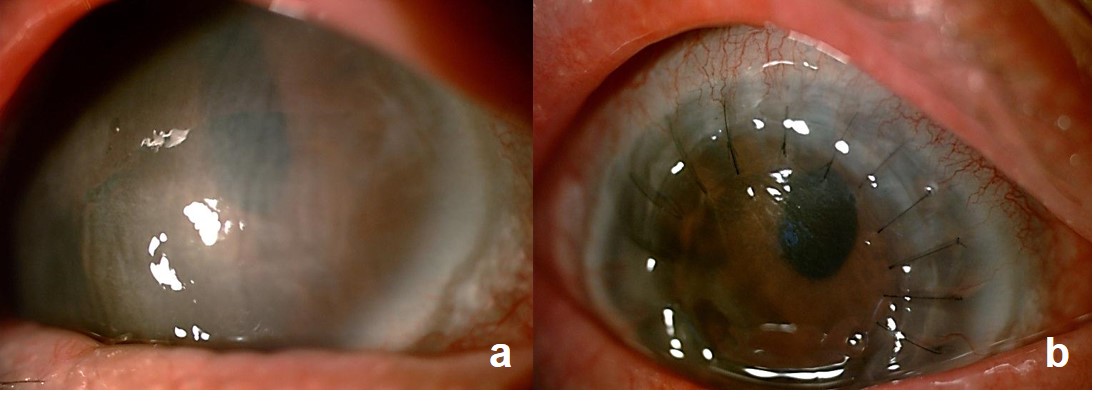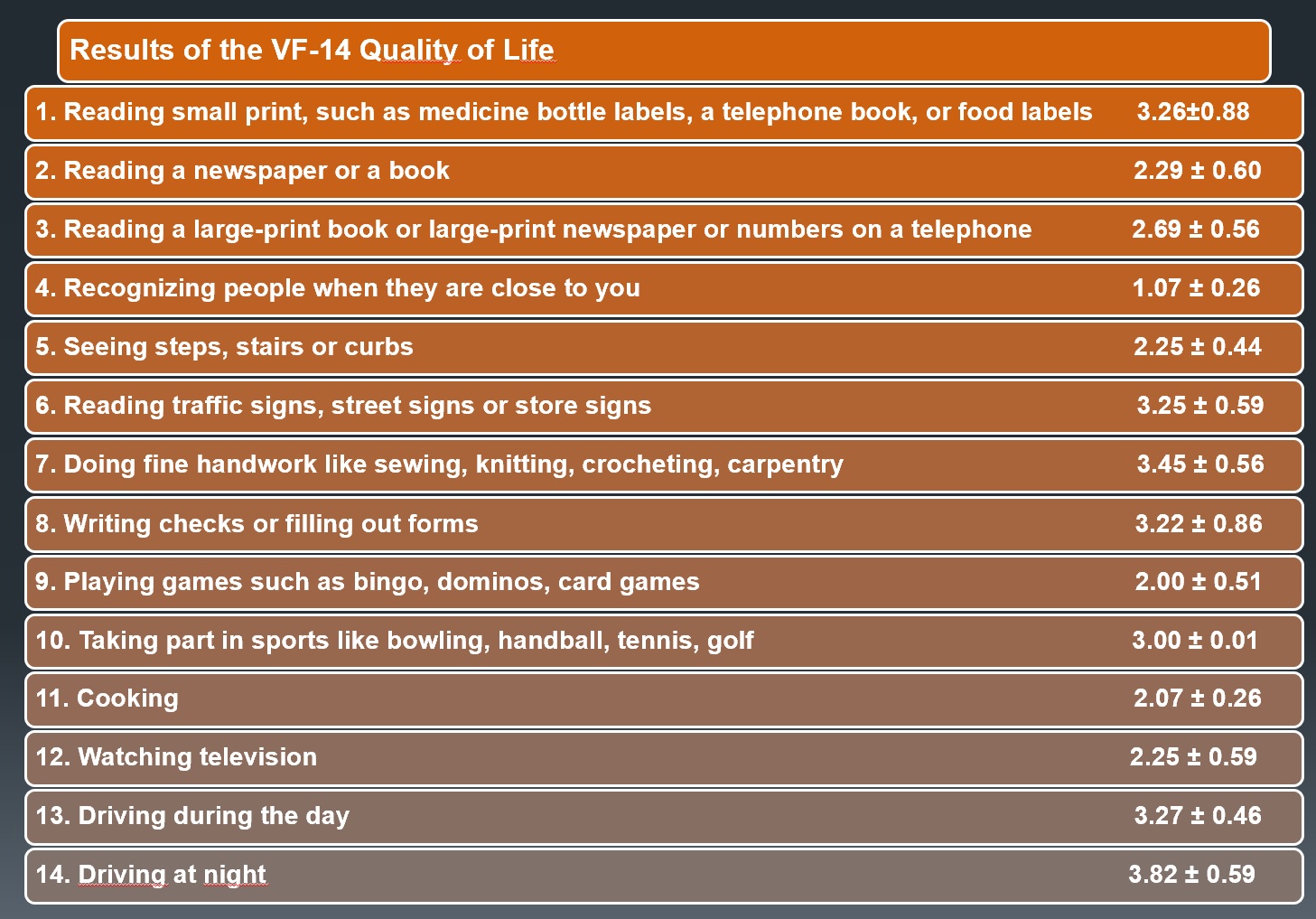The effect of corneal transplantation on visual function and vision-related quality of life
Leyla Asena1, Dilek Dursun Altınors1, Sibel Oto1.
1Ophthalmology, Baskent University Faculty of Medicine, Ankara, Turkey
Introduction: The success of corneal transplantation surgery is usually determined by graft clarity, absence of complications such as rejection, low astigmatism, and good visual acuity. However, patients are often more concerned about their visual function and its impact on their activities of daily living which are determinants of vision-related quality of life (QOL).
Currently it is agreed upon that the real success of a medical intervention can be measured by its effect on the quality of life.[1] The patients’ expectations may not be met, and they may still experience poor functional outcome despite successful corneal transplantion.[2]
National Eye Institute Visual Function Index 14 (NEI VF-14) was designed and validated to assess vision-related functioning in patients undergoing cataract surgery, but it has also been validated for use with other eye conditions such as glaucoma, retinal, and corneal diseases.[3][4][5][6]
The aim of this study was to assess the QOL and satisfaction of patients who underwent corneal transplantation by using the NEI VF-14.
Patients and Methods: Survey data using a modified version of the VFI were collected at the 3rd postoperative month from 38 patients who underwent corneal transplantation in 2018 at Baskent University Faculty of Medicine.
The questionnaire was administered by a trained researcher (LA) in a face-to-face manner.
The grading was performed as follows: 0, no difficulty; 1, a little difficulty; 2, moderate difficulty; 3, quite difficult; 4, impossible to perform.
Sociodemographic and clinical data, including age, sex, initial and follow-up visual acuities, were collected.
QOL survey measures were compared with patients' clinical findings to assess the differences between objective and subjective visual functioning.
Results: Mean age of the patients was 54.5±11.4 years.
All patients underwent an uneventful surgery and had no complications during follow-up (Figure 1).

Mean best corrected Snellen visual acuity was 0.32±0.21 preoperatively and increased to 0.56±0.24 at the end of the 3rd month.
The results of the NEI VF-14 questionnaire are shown in Figure 2.

The most difficult tasks to perform were reading small print, reading traffic signs, doing fine handwork and driving at night.
Although there was almost a twofold increase in mean visual acuity, most patients reported difficulty in daily activities with mean scores between 1.07 and 3.82 for different tasks.
Discussion: Corneal transplantation patients face difficulties in many daily activities at the 3rd postoperative month and report a low QOL despite increase in vision.
Studies have shown that depression is common among adults with visual impairment.[7] This is of relevance to corneal graft recipients and might be the reason for the reported low QOL after corneal transplantation.
Conclusion: Corneal graft recipients should receive preoperative counselling helping them to gain a realistic expectation of the outcome following corneal transplantation.
[1] Massof RW, Rubin GS. Visual function assessment questionnaires. Surv Ophthalmol 2001; 45: 531–548.
[2] Mendes F, Schaumberg DA, Navon S. Assessment of Visual Function after Corneal Transplantation: The Quality of Life and Psychometric Assessment after Corneal Transplantation (Q-PACT) Study. Am J Ophth 2003; 135: 785–793.
[3] Weisinger HS . Assessing the impact of glaucoma using the VF-14. Clin Experiment Ophthalmol. 2009;37:241.
[4] Linder M Chang TS Scott IU . Validity of the Visual Function Index (VF-14) in patients with retinal disease. Arch Ophthalmol. 1999;117:1611–1616.
[5] Rohart C Fajnkuchen F Nghiem-Buffet S Abitbol O Badelon I Chaine G. Cataract surgery and age-related maculopathy: benefits in terms of visual acuity and quality of life-a prospective study [in French]. J Fr Ophtalmol. 2008;31:571–577.
[6] Boisjoly H Gresset J Charest M . The VF-14 Index of Visual Function in recipients of a corneal graft: a 2-year follow-up study. Am J Ophthalmol. 2002;134(2):166–171.
[7] Rees G, Fenwick EK, Keeffe JE, Mellor D, Lamoureux EL. Detection of depression in patients with low vision. Optom Vis Sci. 2009;86(12):1328–1336.
There are no comments yet...